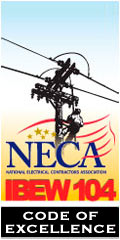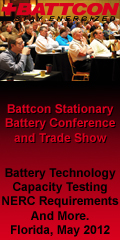
| Past Issues/Subscribe | Employment | neppa.org | Legislative Update | Advertise | September 2011 |

Public Power Shows How it is Done
The devastation wrought by Hurricane Irene in New England brought long, dark days to families and businesses throughout our region. For many, however, the days were longer and more numerous, as the large private electric utilities struggled with extensive service outages and insufficient line crews to keep up with the damage. The usual practice of calling in utility crews and private contractors from outside the system was not particularly effective for this storm, as virtually the entire eastern seaboard of the United States was coping with the same storm, and "outside crews" had to travel long distances to provide assistance. In cases where they were available, lack of familiarity with service territories, roads, streets and distribution circuits only added to the time necessary to make repairs and turn power back on. In such circumstances, the value of community-owned electric utilities is never more apparent. Local line crews who live in or very near their own service territories and are thoroughly familiar with their distribution system need far less time to implement their emergency response plans. Also, long-established working relationships with other municipal public safety departments mean that essential local communications and coordination of resources can take place readily, minimizing confusion and the distribution of erroneous information. In Massachusetts, a fire chief in Sudbury (served by a private utility) said that he was unable to contact any official from the electric utility until 24 hours after the storm hit. Even a day later, he still did not know the extent or location of power outages in his town. The same utility notified public safety officials after the storm that they would not take a priority list of streets to work on from local officials, instead requiring customers to contact them directly. Whatever else might be said of the response efforts of this utility, their communications with local government officials obviously could have used a little improvement. Most of all, many of New England’s public power utilities demonstrated during the past few weeks what the fundamental concept of "local control" is all about. Their managers and crews were on the front lines, cancelling weekend and vacation plans to be sure that sufficient manpower was available to deal with the storm’s effects. When necessary, they were able to call on their fellow public power systems in the region to provide assistance, with whom they already had strong working relationships and a formal mutual aid program. It is always amusing to hear utility industry "experts" praise the virtues of large companies, with their sophisticated outage management systems, customer service programs and economies of scale. As we know here in Massachusetts, an even larger regional utility is being proposed through the merger of NStar and Northeast Utilities. For those who are served by public power systems in New England, Hurricane Irene should be an important reminder that community-owned and operated electric utilities remain the gold standard for customer service, and that the public power "business model" still works pretty well after a century of practice. |



